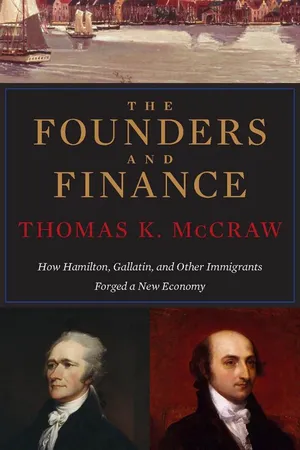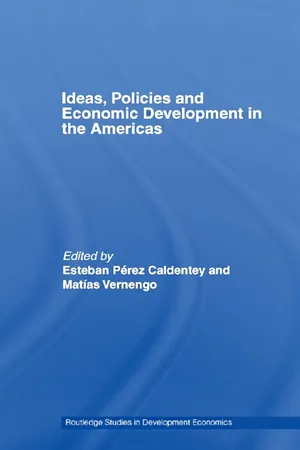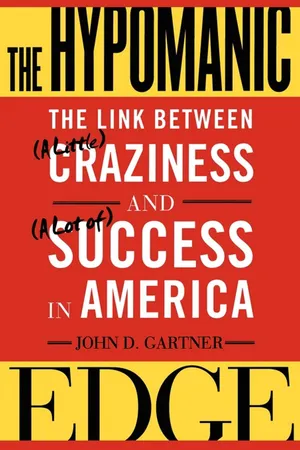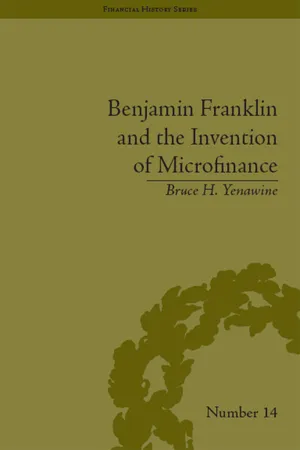History
Hamilton Financial Plan
The Hamilton Financial Plan was a series of economic policies proposed by Alexander Hamilton, the first Secretary of the Treasury of the United States, in the late 18th century. The plan aimed to establish the country's financial stability by assuming state debts, creating a national bank, and implementing tariffs and taxes. Hamilton's plan laid the foundation for the nation's economic system and set the stage for the development of modern capitalism in the United States.
Written by Perlego with AI-assistance
Related key terms
7 Key excerpts on "Hamilton Financial Plan"
- eBook - ePub
- Thomas K. McCraw(Author)
- 2012(Publication Date)
- Harvard University Press(Publisher)
Hamilton and his successors needed (and, because of his reforms, received) reliable schedules for the receipt and disbursement of funds, solid data on a variety of other economic matters, and accurate reports on changing conditions—all delivered by a corps of dependable subordinates. This was a singular accomplishment, without which the funding and assumption plans, the Bank of the United States, and the entire fiscal system could not have worked well. 25 Had Hamilton been less brilliant, less intrepid, or less persistent in pursuing these goals, we would likely never have heard of him. Certainly he would not be ranked among the major founders, alongside Franklin, Washington, Adams, Jefferson, and Madison. He possessed supreme talents and honed them with constant study and dedication. He seemed able to outwork any of his contemporaries and to elicit the best efforts from the Treasury’s civil servants. The political scientist Leonard D. White, an eminent scholar not given to overstatement, wrote in 1948 that Hamilton was “the greatest administrative genius of his generation in America, and one of the great administrators of all time.” 26 In pursuit of his goals, which could hardly have been more ambitious, Hamilton had exerted almost superhuman effort for more than twenty years. He had filled many roles: as a teenaged pamphleteer justifying strong action against Britain; as a captain of artillery and as Washington’s aide-de-camp during the War of Independence; as a moving spirit behind the Constitutional Convention of 1787; and as the principal author of The Federalist Papers, whose purpose was to get the Constitution ratified. Once he became secretary of the treasury, he had devised a comprehensive and audacious economic program for the new nation and had persuaded Congress to enact it. Almost from the moment of his arrival from St. Croix, he had composed reams of letters, pamphlets, essays, speeches, and reports—of compelling persuasive power - Esteban Pérez-Caldentey, Matias Vernengo(Authors)
- 2000(Publication Date)
- Routledge(Publisher)
As the first Treasury Secretary in Washington’s administration Hamilton sent three Reports to Congress that are of interest to us. The first report sent on 9 January, 1790 was on public credit and dealt with the accumulated debts of the states during the war of independence. Hamilton argued that all debts should be consolidated and assumed by the Federal government since the debts had been incurred in a common cause, and that the debt should be funded in order to improve the public credit of the nation. By funding Hamilton meant guarantee the revenues to pay for the interest, but not necessarily the principal, on the debt. The plan involved the transformation of devalued notes into perpetual annuities with relatively low rates of interest, following the example of British consols. Resistance to his plan led to the famous bargain with Jefferson and Maddison, by which the plan was approved in exchange for the transfer of the capital from New York to Philadelphia and then to somewhere in Virginia on the margins of the Potomac River.Hamilton emphasized that the Federal government should have the power to tax to support national credit. The new government should have the power to tax imports, which would be the fundamental source of revenue followed by excise taxes. He also proposed that specific taxes were earmarked for the payment of interest, while the payment of the principal could be delayed indefinitely. In that respect tariffs play a more important role in raising revenues than as a protectionist measure per se. Hamilton also argued for bounties (i.e. subsidies) to render American products more competitive abroad, and guarantee an influx of bullion. These measures are outlined in his Report on Manufactures, requested by Congress in January of 1790 and sent in December of the following year.21The final task in Hamilton’s financial plan was the creation of a national bank, outlined in the Report on a National Bank- Clement Fatovic(Author)
- 2016(Publication Date)
- University Press of Kansas(Publisher)
Hamilton also made the pragmatic political argument that the specific plan he proposed was absolutely necessary to win the support of financial and commercial elites. The need to engage moneyed men in any plan to restore the credit of the United States was a theme Hamilton sounded early and often in his career. 20 The attachment of “that description of Men, who are in every society the only firm supporters of government” was so critical at this delicate juncture in the country’s history that it outweighed any concerns about the inequality, unfairness, or vices his plan might stimulate. 21 The treasury secretary conceded that the funding plan “fosters a spirit of gambling,” but he believed these tendencies were limited to those actually engaged in “jobbing in the funds.” However, he rejected as “malignant and false” the notion that investment and trading in public securities “furnished effectual means of corrupting.” 22 To be sure, there were spectacular profits to be made, but it was a “strange perversion of ideas, and as novel as it is extraordinary, that men should be deemed corrupt & criminal for becoming proprietors in the funds of their Country.” 23 Hamilton did not deny that those who already possessed substantial wealth in financial instruments would reap the lion’s share of benefits from his funding plan. In fact, the prospect of huge profits for investors was critical to the success of his program- eBook - ePub
The Hypomanic Edge
The Link Between (A Little) Craziness and (A Lot of) Success in America
- John D. Gartner(Author)
- 2008(Publication Date)
- Simon & Schuster(Publisher)
121 Here is a partial list of leading economic indicators to consider: (1) The government was bankrupt and had no source of revenue. (2) Both the federal government and the state governments were defaulting on the massive debts incurred to win the Revolution, driving American credit down. (3) There was no viable currency. The $200 million in paper money the Continental Congress had printed was worthless. “Not worth a Continental” had become a popular expression. (4) Although the economy had been on the upswing since the Constitution had been adopted in 1787, it had a long way to go. The country was just recovering from a depression.Alexander Hamilton solved all of these problems by the time he left office in 1795. For good reason, New York Times economics columnist Paul Krugman once praised President John F. Kennedy’s council of economic advisers by saying that “they were the greatest collection of economic minds to sit in one room since Alexander Hamilton pondered alone.”Establishing America’s CreditMuch was accomplished through the scheme for a national debt that Hamilton had tried to explain to Robert Morris by letter during the Revolution. Immediately upon taking office, Hamilton threw himself into a fury, producing his forty-thousand-word Report on Public Credit in a three-month “surge of desperate speed.”122 As always, “his capacity for hard work was almost superhuman.”123Hamilton could not endure watching America become a shameful bankrupt, as his father had been. He moved quickly to prop up the nation’s plummeting credit. All the states had war debts, but few had ideas about how to repay them. The federal government had no means to repay the $67 million the Continental Congress had borrowed from French and Dutch bankers. Thousands of revolutionary soldiers sent home with government IOUs in lieu of pay weren’t going to get paid anytime soon either, and some of the veterans’ protests were becoming violent. The government even had a lottery to raise money and then didn’t pay the winner. - eBook - ePub
The Many Faces of Alexander Hamilton
The Life and Legacy of America's Most Elusive Founding Father
- Douglas Ambrose, Robert W. T. Martin(Authors)
- 2006(Publication Date)
- NYU Press(Publisher)
10Only fourteen months after New York’s ratification of the Constitution, President George Washington nominated and the Senate confirmed Hamilton to be the first secretary of the newly created department of the Treasury. He faced an imposing task. National finances were in disarray, America’s credit among lender nations was weak, the country lacked a stable currency, states quarreled over trade relations, and debt plagued both the state and central governments. Within three months of assuming his new position, Hamilton produced his “Report on Public Credit.” His ambitious plan called for both the funding of the $54 million national debt and the assumption of $25 million of state debts by the federal government. Both aspects of the plan aroused controversy. Hamilton sought to have the holders of old Continental securities exchange the now-depreciated notes for new bonds at face value; critics, led by former ally James Madison, favored discriminating between the original holders of the securities, many of whom were Revolutionary War veterans, and those who later purchased them at a fraction of their face value. Madison’s discrimination proposal failed in the House of Representatives, and Hamilton’s funding plan went forward. His plan to have the federal government assume the debts of the states, however, failed in its initial vote in the House. Some states, including Madison’s Virginia, argued that the assumption plan punished those states that had paid off much of their war debt by forcing them to pay for the debts of less responsible states. In the famous dinner compromise of 1790, Hamilton, Madison, and Secretary of State Thomas Jefferson hammered out a solution wherein Virginia and other Southern states accepted assumption in return for the establishment of the permanent national capital at a location on the Potomac River.11 - eBook - ePub
Concrete Economics
The Hamilton Approach to Economic Growth and Policy
- Stephen S. Cohen, J. Bradford DeLong(Authors)
- 2016(Publication Date)
- Harvard Business Review Press(Publisher)
The first step in jump-starting the financial market necessary to support such matching was to get America’s rich used to buying and selling securities via a thick market in US government bonds. The second step would be to establish a national bank to serve as a clearinghouse. “Wildcat” as an economic term originated not in the oil but in the banking industry. And originally it was not a compliment. If you tried to pay with a banknote printed by a “wildcat bank,” the fear was that the bank was so far out on the frontier that wildcats had eaten the bankers and there was nobody left alive to stand behind the note. The goal was a banking system that was large and rich, but even more so, controllable and stable.The point was not to create go-go financial princes on Wall Street. The point was rather to bind the wealthy to the success of the federal government, and to the success of the commercial and industrial enterprises that would spring up as a result of federal assumption of the debt, federal creation of the bank, and the resulting deepening of financial markets.Through all this Hamilton explained, eloquently and perceptively, the benefits of his policies to promote commerce, banking, and industry. Hamilton advocated for assumption of the national debt, for a national bank, for federal government encouragement of manufactures, for an army and a navy and domestic industries to equip and supply them, for internal infrastructure improvements, and for a tariff-based tax system to finance them and protect the infant industries from cheaper and better imports.From the Hamiltonian System to Mass Production
The Hamiltonian system did stick. It flourished, and slowly transformed itself first into the American System of manufactures and then into mass production and Fordism proper. And it set the pattern for all subsequent redesigns of the American economy. These too have involved an analogous seedy interplay of interests and compromises on what government could do to enable growth, and how it should do it. - Bruce H. Yenawine(Author)
- 2015(Publication Date)
- Routledge(Publisher)
1General themes and specific features of Franklin’s 1789 plan for the two municipal trusts in Boston and Philadelphia, i.e., (1) the ethos of saving and the specific phenomenon of the sinking fund,2 (2) the industrious (as individual and as nation) and their need for working capital, (3) the value of labour and the basis for national credit and currency, (4) the concept of loans to individuals to stimulate the growth of business enterprise, (5) the length of the term of loans and the repayment plan, (6) the interest rate for the loans and the consequent rate of compounding principal with interest, are variations on ideas Franklin explored with his contemporaries. The trust scheme laid out in the 1789 codicil follows the same Franklin recipe for progress and prosperity that he designed for the new nation, based on his study of colonial American, English and French government.Franklin lived in France from 1778 until 1785 as the Minister Plenipotentiary of the United States. His primary diplomatic mission was to convince the French to provide covert financial and military aid to help America win its independence. After the astounding American victory in the Battle of Saratoga in 1777, Franklin was able to secure direct and overt assistance from the government of Louis XVI and what remained of the Ancien Regime.3 It was Franklin’s growing rapport with Robert Gravier, Comte de Vergennes, wily Minister of Foreign Affairs, and chief French political strategist, that made possible the Franco-American alliance. Although this diplomatic alliance was of great international importance, Vergennes’s judicious restraint prevented him from warmly embracing the intellectually ubiquitous and socially lionized Franklin. Their cautious and formal compatriotism and their subtle and reserved diplomacy facilitated the torturously complex negotiation that enabled the Americans to finance the war and maintained the delicate balance of power between the French and the English.4
Learn about this page
Index pages curate the most relevant extracts from our library of academic textbooks. They’ve been created using an in-house natural language model (NLM), each adding context and meaning to key research topics.






